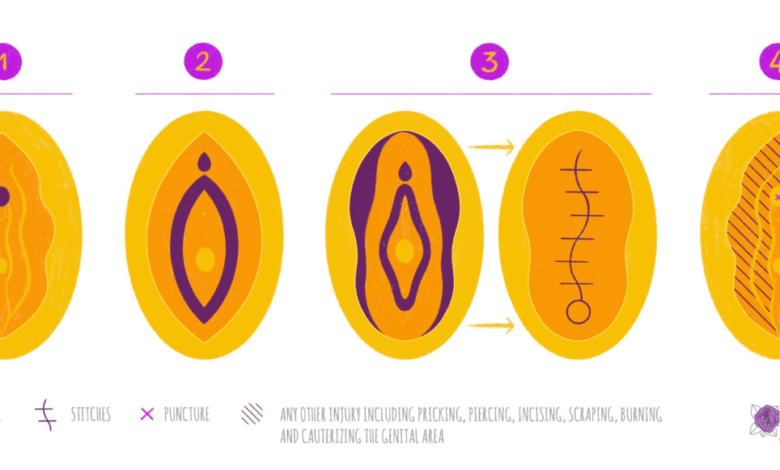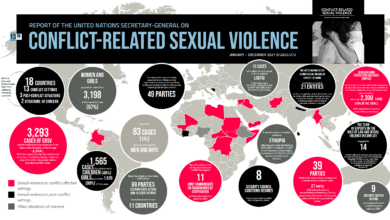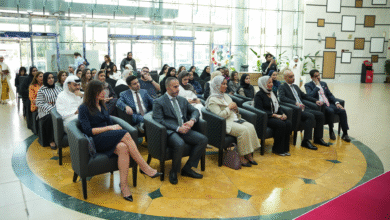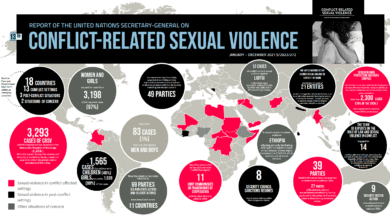Female Genital Mutilation: A Call for Health Worker Action

Female genital mutilation, commonly referred to as FGM, remains a pressing global health issue, deeply in need of attention and action. Despite a notable decline in its prevalence, the World Health Organization (WHO) reports that one in four cases of FGM is now performed by trained health workers, an alarming statistic that highlights the dual role of healthcare professionals in both perpetuating and combating this harmful practice. The effects of FGM can have devastating consequences for women’s health, leading to both immediate and long-term physical and psychological complications. To address this, the WHO has released updated guidelines on FGM prevention, emphasizing the need for health workers to become advocates for change rather than perpetrators. By improving awareness and education among health professionals, we can move closer to eradicating female genital mutilation and protecting the rights of women and girls worldwide.
Often referred to as female circumcision or female genital cutting, this cultural practice involves the partial or total removal of the external female genitalia for non-medical reasons. The prevalence of this practice, tragic in its implications, affects millions of girls and women across various regions and cultures. Resources such as the WHO guidelines on FGM serve as crucial tools in mobilizing healthcare capabilities towards its prevention. Health workers play a pivotal role in this effort, fostering community discussions and challenging the norms that sustain such traditional practices. Understanding the various terms used to describe this issue can enhance dialogue and promote effective strategies for combating female genital mutilation.
Understanding the Role of Health Workers in Female Genital Mutilation
Female genital mutilation (FGM) is a deeply rooted cultural practice affecting millions of girls and women worldwide. Alarmingly, a significant proportion of FGM cases are now being performed by trained health workers, as noted by the World Health Organization (WHO). This alarming trend raises critical questions about the ethical responsibilities of healthcare professionals. While these practitioners are often viewed as agents of care, their involvement in such harmful practices contradicts their role as protectors of health and well-being.
The WHO emphasizes that health workers must champion the rights of girls and women, advocating against FGM instead of contributing to its perpetuation. By engaging with communities about the risks associated with FGM, healthcare professionals can shift perceptions and advocate for the abandonment of such harmful rituals. It is vital for health workers to understand that their participation in FGM not only endangers the physical health of women but also impacts their mental and emotional well-being.
The Global Impact of Female Genital Mutilation Statistics
According to recent statistics, around 52 million women and girls have undergone FGM at the hands of health professionals. This equates to one in four cases being conducted in medical settings, where the expectations of safety and care are typically paramount. These stark figures reveal a troubling intersection of health and human rights, underscoring the urgent need for reform within the healthcare system to combat FGM effectively.
The implications of these statistics extend beyond individual suffering; they call for comprehensive strategies to combat this practice. The WHO guidelines provide a framework for addressing FGM effectively by educating healthcare professionals about its adverse effects and by advocating for community-based interventions that prioritize the rights and health of women and girls. By utilizing targeted statistics in advocacy efforts, stakeholders can foster greater social awareness and urgency around the issue of FGM.
WHO Guidelines on FGM Prevention and Health Workers’ Responsibility
The World Health Organization has developed critical guidelines aimed at equipping health workers with the knowledge and resources necessary for FGM prevention. These guidelines emphasize the significance of healthcare providers as pivotal players in efforts to eliminate FGM. They outline specific strategies that can empower health workers to take action against this practice, including community outreach and education.
Moreover, the guidelines call on healthcare systems to create environments where health workers can freely discuss the harms of FGM without fear of backlash. By fostering open communication and collaboration within health services, professionals can influence community attitudes and help shift cultural norms that tolerate FGM. The responsibility of health workers goes beyond treatment; they must also act as catalysts for change and leaders in advocating for the abandonment of FGM.
The Long-term Health Effects of Female Genital Mutilation
FGM can lead to numerous long-term health problems for those affected, including chronic pain, sexual dysfunction, and complications during childbirth. Additionally, the psychological impact can manifest in mental health issues, such as depression and post-traumatic stress disorder. Understanding these serious health consequences is crucial for both healthcare providers and communities to see FGM as not just a cultural practice, but a violation of human rights that jeopardizes health and well-being.
Healthcare providers can play a significant role in providing support and care to survivors of FGM, making awareness about these long-term effects essential in efforts to prevent the practice. By emphasizing the medical risks associated with FGM in outreach programs, health workers can motivate communities to move away from this practice while also providing necessary help for those already affected.
The Importance of Community Engagement in FGM Prevention
Community engagement is paramount in the fight against FGM, as it addresses the cultural and social factors that sustain this harmful practice. Involving health workers in local discussions about FGM allows them to educate communities on its adverse effects and promotes a shared responsibility for change. By partnering with local leaders and organizations, healthcare professionals can facilitate dialogues that challenge misconceptions surrounding FGM and promote the health rights of women and girls.
Healthcare workers can serve as trusted sources of information in their communities. When they actively listen to and engage with community members, they can build rapport and foster trust. This paves the way for honest conversations about the implications of FGM and encourages collective action to abandon the practice, ultimately leading to improved health outcomes for future generations.
FGM as a Human Rights Violation
FGM is recognized as a profound violation of human rights, impacting the health and dignity of millions of girls globally. International bodies, including the UN, classify it as an act of discrimination against women and girls, as it strips them of their autonomy and imposes severe health risks. The acknowledgment of FGM as a human rights issue calls for urgent action from governments, healthcare providers, and communities to eliminate this practice.
Educating healthcare workers about FGM as a human rights violation is crucial to fostering their role as advocates for change. Health professionals can lead efforts to challenge and reshape societal views on FGM, ensuring that the rights of girls and women are prioritized. Training sessions that focus on the human rights aspects of FGM will empower health workers to promote advocacy and enact practices that protect women’s health and rights.
Creating Support Systems for FGM Survivors
Survivors of FGM often require comprehensive support systems to address their physical and psychological needs. Healthcare providers must be trained not only to treat the physical ramifications of FGM but also to provide emotional support and resources that facilitate healing. Establishing support networks in communities can play a key role in ensuring that survivors receive the necessary care and understanding as they recover from their trauma.
Implementing survivor-centered care models within healthcare services is essential. This includes creating protocols that guide health workers on how to approach and support survivors of FGM effectively. These models should encompass mental health services, community support groups, and educational programs that empower women and girls, helping them navigate recovery in an understanding and supportive environment.
Tackling Myths and Misconceptions About FGM
There are many myths and misconceptions surrounding female genital mutilation that perpetuate its practice. One common belief is that FGM is a religious requirement, when in many cases, it is a cultural tradition rather than a religious doctrine. Health workers have a critical role in challenging these misconceptions through education and outreach.
By debunking such myths, health professionals can begin to shift mindsets and promote a deeper understanding of the repercussions of FGM. This educational engagement not only helps in reducing the prevalence of FGM but also fosters an environment where communities feel empowered to make informed decisions regarding their health and cultural practices.
International Efforts and Commitments to End FGM
On a global scale, various organizations and governments are dedicating efforts to end female genital mutilation. The commitment to eradicating FGM is reflected in international policies and agreements aimed at protecting the rights of women and girls. The WHO guidelines play a significant part in these international efforts by providing a framework for countries to implement policies that explicitly ban FGM and promote prevention.
Moreover, the engagement of health workers in these international initiatives is crucial for success. As the frontline responders, they are in a unique position to influence policy implementation and foster cultural changes within their communities. By advocating for human rights and aligned health standards, health workers can contribute to the global movement towards a future free from FGM.
Frequently Asked Questions
What role do health workers play in female genital mutilation (FGM)?
Health workers can significantly influence the practice of female genital mutilation (FGM) as they are often involved in its continuation through a medicalized approach. Surprisingly, one in four cases of FGM is now performed by trained healthcare professionals. However, WHO emphasizes that health workers should act as agents of change and advocates against this harmful practice by promoting its prevention and supporting survivors.
What are the effects of female genital mutilation (FGM) on health?
Female genital mutilation (FGM) can lead to severe short- and long-term health issues, including mental health disorders, obstetric complications, and the potential need for surgical repairs. The medicalization of FGM by health professionals can even increase the risks of serious injuries. WHO guidelines state that it is a serious violation of girls’ rights and jeopardizes their overall health.
How are WHO guidelines on FGM improving prevention efforts?
The WHO’s guidelines on FGM provide crucial recommendations for health workers, governments, and local communities to enhance prevention efforts. By emphasizing the training of health workers and their role as opinion leaders, the WHO aims to foster community engagement and awareness about the risks associated with FGM, thereby reducing its prevalence.
What are the latest female genital mutilation statistics?
As of 2020, approximately 52 million girls and women have experienced female genital mutilation (FGM) performed by health workers, highlighting a concerning trend where trained professionals are involved in this practice. Although FGM has been decreasing globally—reporting a threefold reduction since 1990—30 countries still perform FGM, putting four million girls at risk each year.
How can FGM be effectively prevented?
Effective prevention of female genital mutilation (FGM) requires a multi-faceted approach, including education and awareness campaigns led by health workers, community leaders, and policymakers. By engaging health professionals in training programs, WHO supports initiatives that help them inform communities about the dangers of FGM and advocate for its elimination.
What evidence supports the harm caused by FGM?
Numerous studies evidence that female genital mutilation (FGM) is harmful regardless of who performs it, with health professionals often contributing to more severe complications due to the medicalization of the procedure. WHO emphasizes that FGM violates the rights of girls and causes significant health risks, which can include both physical injuries and psychological trauma.
What progress has been made towards reducing FGM rates?
Progress has been noted in several countries towards reducing female genital mutilation (FGM) rates. For instance, Burkina Faso has achieved a 50% reduction in FGM among those aged 15 to 19 over the last 30 years. Strong political commitment, community engagement, and support from health workers have played crucial roles in these advancements.
What should health workers do to tackle FGM?
Health workers are urged to become advocates for change against female genital mutilation (FGM) by raising awareness of its risks and promoting its prevention. They should engage with communities sensitively, considering local beliefs while educating families about the health consequences of FGM and supporting affected individuals.
| Key Point | Details |
|---|---|
| Prevalence of FGM | About one in four cases of FGM are now performed by health workers. |
| Role of Health Workers | Health workers must change perceptions of FGM instead of perpetuating it. |
| Global Decline | Since 1990, the likelihood of girls undergoing FGM has decreased threefold. |
| Health Risks | FGM can lead to serious health complications, both mental and physical. |
| Guidelines by WHO | New WHO guidelines call for better care for survivors and training for health workers. |
| Success Stories | Countries like Burkina Faso and Sierra Leone have significantly reduced FGM rates. |
Summary
Female genital mutilation (FGM) remains a critical issue affecting millions of girls and women worldwide. Despite global declines in the practice, the alarming statistic that one in four cases is now performed by trained health workers highlights the need for urgent action. The role of healthcare professionals must shift from being perpetrators to advocates for change, ensuring the protection of girls’ rights and health. Continuous efforts and local commitments are crucial for eradicating FGM and providing the necessary support to survivors.




